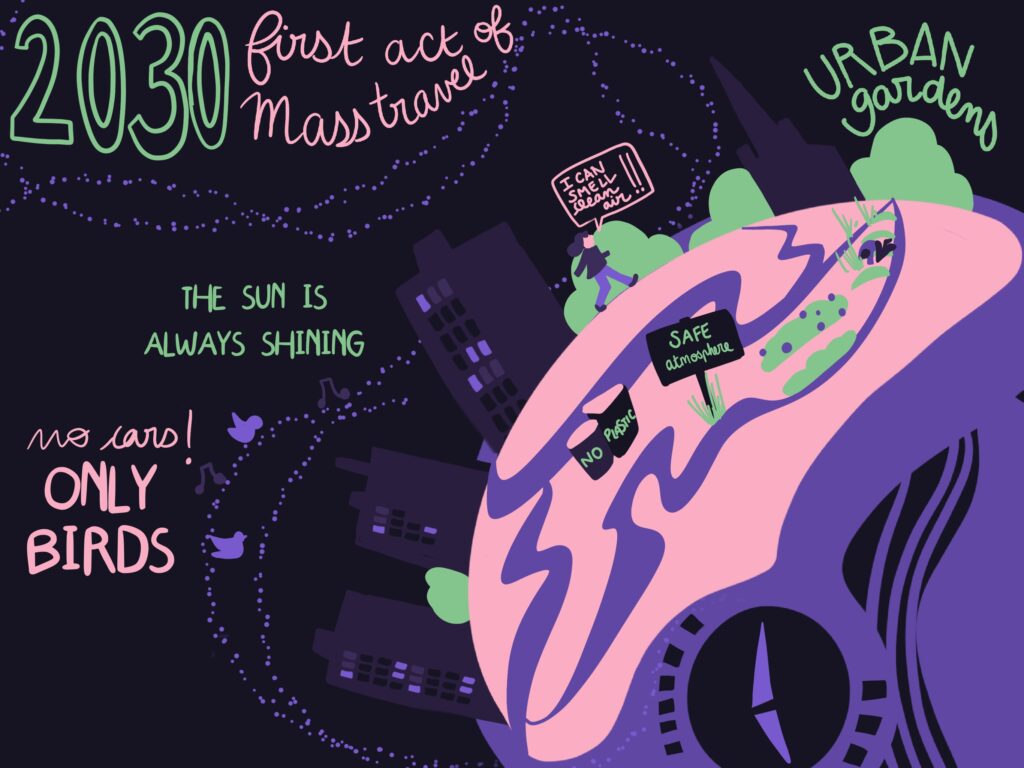Let’s talk about hope: Why we need a new story on climate

“The future was certainly better in the past”, clown-critic Karl Valentin used to quip sardonically to describe the moody mix of anxiety and avantgarde among his contemporaries in the 1920s. A hundred years later, his verdict sounds almost optimistic in view of the climate crisis. With a harrowing 6th IPCC report, and a shift back to fossil fuels prompted by Russia’s war on Ukraine, the chances of reaching the Paris climate goals look dimmer than ever. More than 80 percent of today’s 16- to 25-year-olds believe they are headed for a frightening future, and four out of five feel betrayed by governments’ lack of climate action, according to a survey in ten countries published by Lancet Planetary Health. An invitation to envision a better world seems almost naïve.
And yet: What if? What if it turned out ok? What if we did manage to curb the climate crisis?
At the Philea Forum 2022 in Barcelona, Rob Hopkins – co-founder of the Transition Network and author of From What Is to What If: Unleashing the power of imagination to create the future we want” – invited participants to close their eyes and mentally step into a time machine to envisage their life in a Net-Zero world.
Within minutes, the room was filled with energy: “I can smell clean air.” “My kids will play in the streets. Public transport is so good that most cars are gone.” “I hear birds.” “There’s no plastic.” By the end of the session, that had been hosted jointly by the European Climate Foundation, Stiftung Mercator, Clean Air Fund and Impact on Urban Health, participants reported feeling empowered and newly inspired to fight for a climate transition that had become personal to them.
Naïve?
Curbing the climate crisis requires a systemic economic and social transformation. It touches people in virtually every area of their lives, both at work and at home. Housing and energy, travel and transport, health and food are just some examples.
What a transition of this scale requires is fairness and, above all, an answer to the question “What for?”
Remarkably though, while the climate agenda has been mainstreamed in recent years, public discourse on climate still very much escapes this question. “The best goal most of us who work towards sustainability offer is the avoidance of catastrophe. We promise survival and not much more.” Donatella H. Meadows wrote in 1994, and deplored a “failure of vision”.
Thirty years on, this failure is ongoing. The climate story still is intimidatingly complex and unintelligibly technical for a majority of people. Above all, it has become paralysingly frightening. Our overarching narrative is: “How do we escape doom?” and not “In which world do we want to live?”
This does not only lock us into a false sense of inevitability. Research published in the International Journal of Psychology shows that fear appeals trigger alarm but translate into action only to a very limited extent. If the world is bound for disaster, why not go for a last dance on the Titanic? Disassociation is the most inviting response for those without hope.
So how can we push the climate agenda? It sounds counterintuitive, but simply disseminating ever more facts is not the answer. According to behavioural research published in Nature, surveys in six politically and culturally diverse countries showed that, while climate knowledge is important, higher levels of climate knowledge were not. More knowledge even proved to have a negative effect on people’s concern about climate.
Faced with the challenge of systemic change, what we need are stories of the world we want to build. Stories of hope. Not pink, gooey-eyed hope, but hope that recognises that we can change the world. In fact, we always have. To quote Stephen Duncombe, co-founder of the US-based Center for Artistic Activism: “What were democracy, socialism, anarchism, civil rights, and feminism if not dreams of a world transformed?”
Systemic change is possible. And even though it seems to happen at a snail’s pace when experienced from within, historically speaking, it is as often fast and disruptive: There were only nine years between Rosa Parks’ refusal to give up her seat in the now iconic Alabama bus and the US Civil Rights Act of 1955. Greta Thunberg is still a teenager.
At the Philea Forum 2022, Rob Hopkins called for a revolution of the imagination. The sentence “We need more hope” ran like a thread through debates on panels and in sessions. Hope, of course, is not the belief that everything will be fine. Nor does it replace the message of urgency of action on the climate crisis.
But hope and imagination empower action as they make the political personal and the personal political.
Stories of hope and imagination invite people to step onto the ladder of engagement. They empower communities to become agents of change powerful enough to push political decision-making through popular pressure and popular vote. And they are crucial to sustain people on the difficult path to Net Zero – especially, as backlashes are looming, prompted by costs and the question of fairness in the climate transition, and confounded by added instabilities such as the ones currently caused by Russia’s war.
Philanthropies are in an ideal position to talk about hope and imagination. Not only is the belief in the ability to affect positive change a key part of their DNA. Through the nature of their work and the projects they support, philanthropies are practically realtors of hope and imagination. Let’s measure this impact not only in KPIs, increments, and facts and figures. Let’s not just talk about 1.5 degrees, but about what 1.5 means. The invitation to envision a better world may seem naïve, but it is what makes us achieve the impossible.
© FannyDidou / Sketching the Move
Authors

